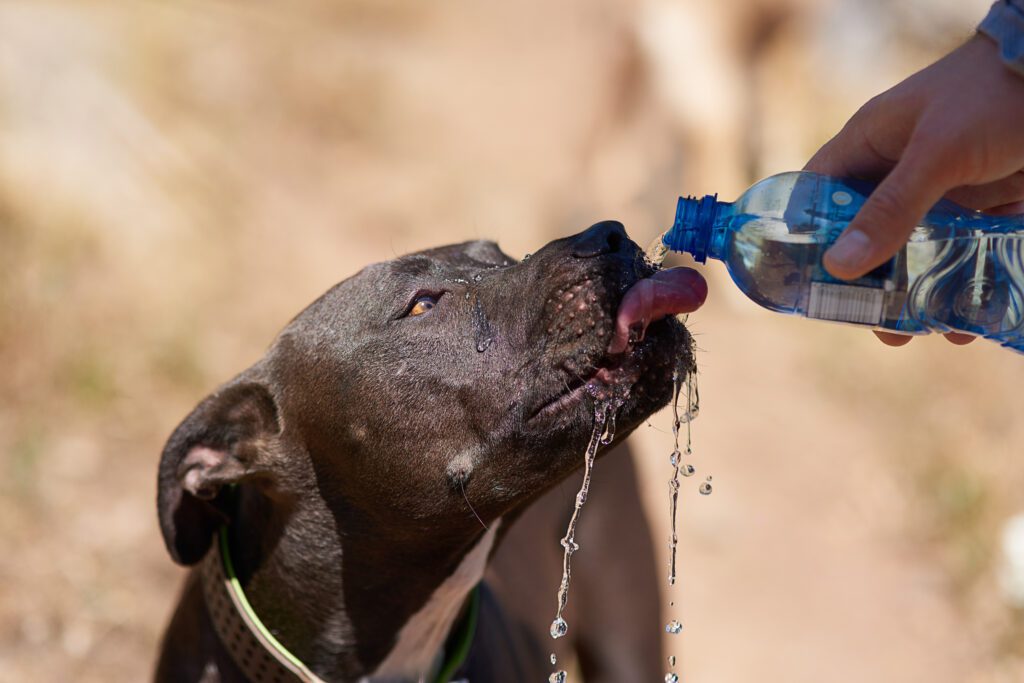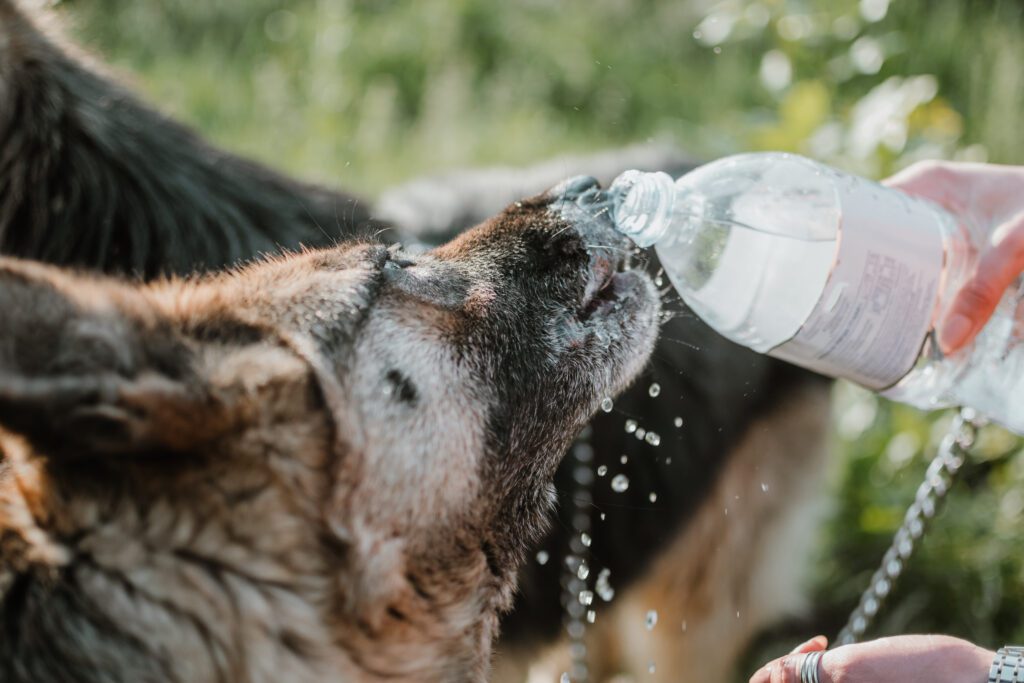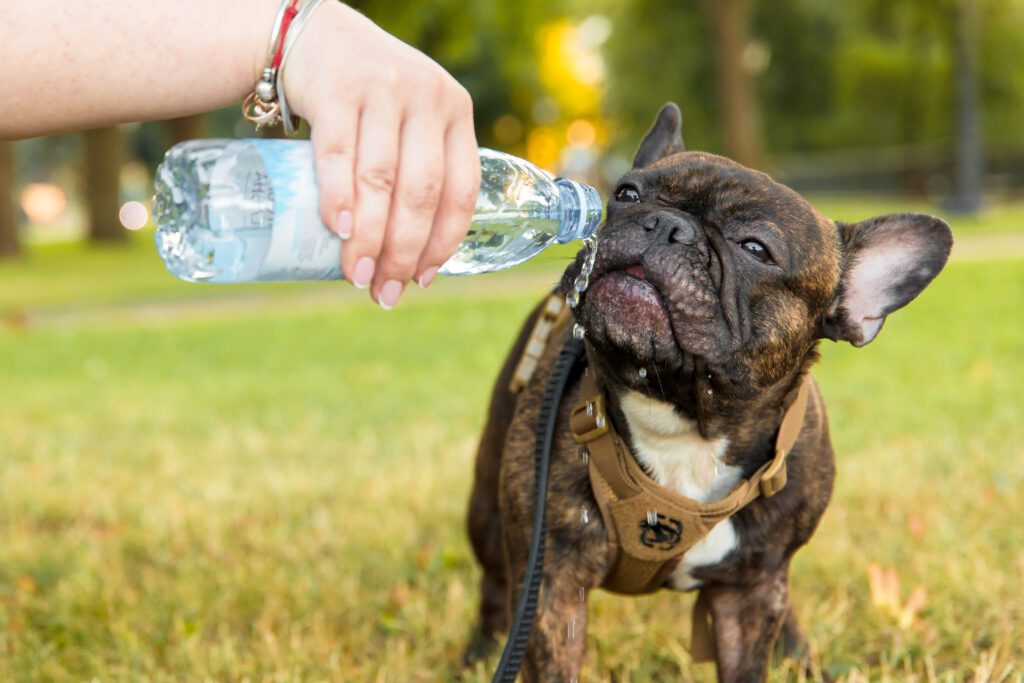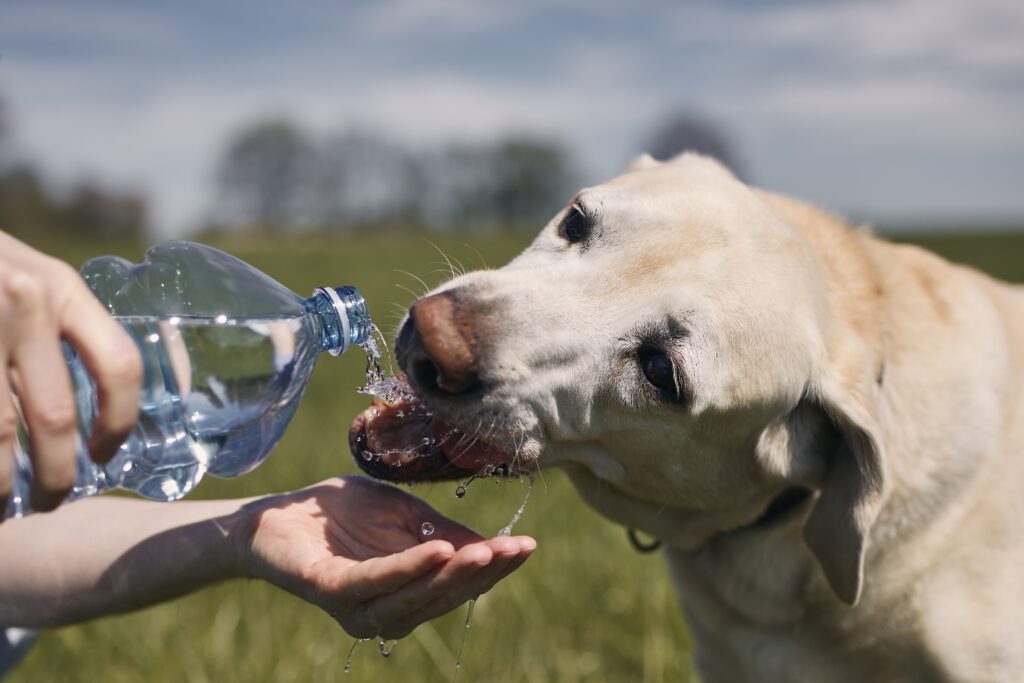When the weather heats up or your pup isn’t feeling their best, there’s one silent threat many pet owners overlook, and that’s dog dehydration. Just like in humans, staying hydrated is critical for a dog’s health. Unfortunately, dogs can’t always communicate when something’s wrong, making it essential to know what to look for and how to respond. Need advice or emergency care? Contact Lakecity Animal Hospital today, we’re here to keep tails wagging in West Kelowna and beyond.
Spotting the Danger Early: Recognizing the Symptoms of Dog Dehydration
Dehydration occurs when your dog loses more fluids than they take in, and it doesn’t take long for things to escalate. Whether it’s from heat, illness, or simply not drinking enough water, it’s vital to act fast.
Here are the most common signs of dehydration in a dog:
- Dry or sticky gums
- Lethargy or decreased energy levels
- Sunken eyes
- Loss of skin elasticity
- Panting and dry nose
- Reduced appetite or refusal to eat
These symptoms of dehydration in dogs show may appear suddenly or gradually. A dehydrated dog might act tired, disoriented, or seem “off” without an obvious reason. If you notice any of these, take action right away.

Gum Checks and Skin Tests: Simple Ways to Assess Hydration at Home
Knowing how to tell if your pup is properly hydrated is something every pet parent should master. Dehydration can sneak up quickly, especially during warmer months, after intense activity, or when your dog isn’t feeling well. Fortunately, you don’t need fancy equipment to check your dog’s hydration levels, just a little observation and a couple of quick tests can make all the difference.
Check Their Gums:
One of the simplest and most telling ways to assess hydration is by checking your dog’s gums. Healthy gums should be moist, smooth, and pink (not dry, sticky, or pale). Run your finger along the gum line. If it feels tacky or your dog seems uncomfortable, that could be one of the early dehydrated dog symptoms.
Next, do the capillary refill test: gently press on the gum with your fingertip until the pink area turns white, then release. The colour should return within 1–2 seconds. If it takes longer, it may indicate reduced blood circulation caused by dog dehydration.
Try the Skin Turgor Test:
Another easy method is the skin turgor test, which evaluates skin elasticity. Gently pinch and lift the skin on the back of your dog’s neck or between the shoulder blades. In a well-hydrated dog, the skin will spring back into place almost immediately. In a dehydrated dog, however, the skin will remain tented or take longer to return to normal. This simple test is especially helpful because skin elasticity is directly affected by fluid levels in the body.
Just keep in mind that older dogs and certain breeds with loose skin may not respond as clearly, so it’s helpful to know what’s normal for your specific pet. By paying close attention to dehydrated dog gums and skin elasticity, you can identify dog dehydration signs before they escalate into more serious health issues. Regular checks like these, especially after walks, playtime, or hot days, can help you stay ahead of potential problems and ensure your pup stays happy and hydrated.
How Long Can a Dog Go Without Water? Understanding the Limits
You might be wondering, how long can a dog go without water? Most healthy dogs can go no more than 72 hours without water and that’s under ideal, cool, and stress-free conditions. In reality, signs of dog dehydration can start within 6 to 12 hours, especially in hot weather or if your dog is sick.
Without enough water, dogs are at risk of:
- Organ failure
- Heatstroke
- Shock
- Death (in extreme cases)
Puppies, senior dogs, and those with chronic conditions can dehydrate even faster. Knowing your dog’s limits isn’t just helpful, it’s lifesaving.
Rehydration at Home: Safe and Simple Ways to Hydrate Your Dog

Mild to moderate dog dehydration can often be treated at home, as long as symptoms are recognized early. Here’s how to bring your dog’s hydration levels back on track.
How to hydrate a dog at home:
- Offer small, frequent amounts of water
Don’t let a thirsty dog gulp a full bowl—this can lead to vomiting. Offer a few tablespoons every 5–10 minutes. - Add flavour to encourage drinking
Try low-sodium chicken or beef broth in their water bowl to entice reluctant drinkers. - Use ice cubes or crushed ice
Especially helpful if your dog is nauseous or refuses to drink—some find licking ice more appealing. - Serve wet food
Canned food contains much more moisture than dry kibble, offering a subtle hydration boost. - Use a syringe or turkey baster
For dogs that refuse to drink, gently squirt water into the side of their mouth using a pet-safe syringe.
If your dog shows improvement within a few hours, you’re on the right track. But if dehydrated dog symptoms persist or worsen, it’s time to contact a vet for emergency services.
Sick Pup? How to Get a Reluctant Dog to Drink Water
A sick dog often refuses food and water, making dog dehydration more likely and more dangerous. So, how to get a sick dog to drink water?
Try these gentle strategies:
- Keep water fresh and clean – Swap out stagnant water frequently.
- Change the bowl – Some dogs have preferences. Try metal, ceramic, or even a pet water fountain.
- Hand-feed ice chips or frozen broth cubes – These can be soothing for upset tummies.
- Encourage licking – Moisten their lips or mouth with a damp cloth to stimulate thirst.
Even a small amount of fluid can help prevent worsening symptoms dehydration dogs often face when ill. If your pup still refuses, seek veterinary care immediately.
When It’s Time to Call the Vet
Knowing how to treat dehydration in dogs at home is important, but so is knowing when at-home care isn’t enough.
Call your vet immediately if your dog:
- Is vomiting or has diarrhea
- Shows signs of confusion or collapses
- Has very dark, pale, or sticky gums
- Refuses to drink for more than 12 hours
- Has sunken eyes or severe lethargy
At Lakecity Animal Hospital, we’re equipped to provide IV fluids, monitor electrolytes, and identify underlying causes of dog dehydration that may require more intensive treatment.

Final Thoughts: Keep Your Pup Hydrated and Healthy
Dog dehydration is preventable with the right knowledge, tools, and attentiveness. By watching for signs of dehydration in your dog, checking their gums and skin, and offering gentle hydration solutions, you can often correct the issue before it becomes critical.
Whether you’re facing a heatwave, an illness, or just a picky drinker, being prepared makes all the difference.

